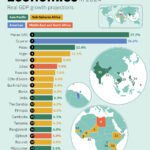by Gene D. Balas
Well, the headline may be a bit extreme and dramatic, but there are reasons why some restraint in asset prices may tighten financial conditions just enough, so the Fed doesn’t have to hit the brakes quite as hard. Recently, Fed Chair Janet Yellen, Fed Vice Chair Stanley Fischer, and San Francisco Fed President John Williams have all mentioned rich valuations (meaning loose financial conditions with high stock prices and low bond yields) as concerns in recent speeches.

In a speech devoted to financial stability concerns, Fed Vice Chair Fischer observed,
“Prices of risky assets have increased in most major asset markets in recent months even as risk-free rates also rose. In equity markets, price-to-earnings ratios now stand in the top quintiles of their historical distributions, while corporate bond spreads are near their post-crisis lows.”
Let’s delve into why they believe high asset prices may be problematic, and why a bit tighter financial conditions may be good for the economy.
First, what do we mean by tightening financial conditions? One example of loose financial conditions is that longer term interest rates are quite low, with the ten-year Treasury yielding about 2.2%, when the Fed believes the fed funds rate will eventually settle in the range of about 2.75% to 3% or so in the long run. Given that, it might be reasonable to expect longer term bonds to yield more than they are. Then there is the stock market that is trading with price-to-earnings and price-to-book ratios that are elevated compared to history, according to Bloomberg data. Credit spreads for high yield corporate bonds are quite low relative to history, according to data from the St. Louis Fed. All of these are examples of loose financial conditions.
Why is this a concern? Well, for starters, consider the past three recessions and the financial conditions that led up to them. In the late 1980s, we had commercial real estate that had risen a bit excessively prior to the 1990 recession. In the 1990s, we had the tech bubble, prior to the 2001 recession. Then we had the housing bubble.














Leave A Comment